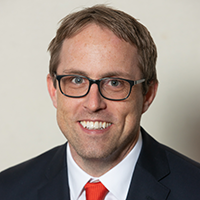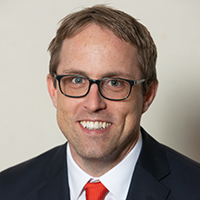
How FirstBank Profits from Being Private
 An alluring narrative in banking nowadays is that only the biggest banks have enough scale to compete in the digital age. If multitrillion dollar institutions like JPMorgan Chase & Co. and Bank of America Corp. can spend 12 times as much on technology and marketing as even the largest superregional banks, which each have hundreds of billions of dollars in assets, how can banks further down the food chain hope to survive? If that were the case, then how does one account for FirstBank Holding Co.?
An alluring narrative in banking nowadays is that only the biggest banks have enough scale to compete in the digital age. If multitrillion dollar institutions like JPMorgan Chase & Co. and Bank of America Corp. can spend 12 times as much on technology and marketing as even the largest superregional banks, which each have hundreds of billions of dollars in assets, how can banks further down the food chain hope to survive? If that were the case, then how does one account for FirstBank Holding Co.?
With $18.6 billion in assets, FirstBank is the biggest bank based in Colorado, where its headquarters sits 10 miles to the west of downtown Denver. It’s among the most efficient institutions in the industry, with an efficiency ratio often dipping below 50 percent. It has an abundance of risk-based capital and virtually no debt to speak of, aside from deposits. And its return on equity has ranked in the top 10 percent of large bank holding companies in all but one of the past 12 years. Yet, the quality that sets FirstBank furthest apart from other banks, particularly those in its peer group, is that it has positioned itself at the vanguard of the digital banking revolution.
The initial rollout of Zelle was a perfect example. In 2014, FirstBank was the fourth bank to join clearXchange, an early person-to-person payments network founded by JPMorgan Chase, Bank of America and Wells Fargo & Co. This allowed FirstBank to be among the small number of banks to go live with Zelle, the successor payments network to clearXchange, the day after its rebranding and official launch in June 2017.
“If you go back to the founding partners of Zelle,” says Don Childears, chief executive officer of the Colorado Bankers Association, “it’s all the leading national banks and this little bank from Colorado.”
What’s the secret to FirstBank’s success?
“There’s no magic bullet,” says former CEO John Ikard, who led the bank from 1999 to 2017, and still sits on its board of directors. “Anybody who says they have a magic bullet, they don’t.” FirstBank’s success emerges instead from a collage of factors-its culture, leadership and a handful of prescient decisions made throughout its 56-year history. Nevertheless, underlying all of these factors has been FirstBank’s decision to eschew the public markets in favor of private ownership, with control of the institution never slipping from the grasp of a small, tightknit group of investors.
There are downsides to remaining private, of course. A publicly traded stock provides convenient access to capital, which can be used to accelerate growth and finance strategic investments. The public markets create liquidity for a company’s equity, too. But the upsides of private ownership, at least in the case of FirstBank, the third-largest privately held bank in the United States, have long exceeded the downsides. Above all, FirstBank’s owners and directors have shielded its executives from the near-term expectations of stock analysts and investors, freeing them to pursue long-term value creation-not just pay lip service to the ideal on quarterly conference calls.
“It allows us as leaders to focus on the next strategic move and look at the operations closer, because we’re not spending all our time on the road speaking to analysts,” says Jim Reuter, the CEO of FirstBank since 2017. “When I talk to peers that are publicly traded, they spend a lot of time and energy in front of analysts and investor groups. There’s opportunity cost when you’re doing that.”
To understand how FirstBank got to where it is today, it helps to know a thing or two about its history. Its founding in 1963 marked a unique confluence of capital, legal acumen and banking know-how. The main equity partners were a pair of real estate developers from nearby Boulder, Colorado, who wanted to own a bank but had previously struggled to get a charter. To do that, they brought in two lawyers with expertise in de novo bank formation-William Johnson and his late colleague Ira Rothgerber, partners in a firm that has represented over a thousand banks across the country. The fifth founder was a local entrepreneur and investor.
“We opened in a trailer in the Westland Shopping Center,” says Johnson, who served as chairman of the bank for 47 years, is known for pioneering the one bank holding company and is the sole surviving member of FirstBank’s five founders. “It had no bathroom in it, so the employees had to use the bathroom at the Safeway across the parking lot.”
Aside from its founders, the most important addition, and later the bank’s largest shareholder, was its first president, Roger Reisher. “Roger was a ball of energy,” says Ikard. “He had this incredible integrity and honesty, and even though you might disagree with him, he was always fair and loyal. And I’ve never seen anybody so singularly focused on the bank. He’d call on the weekend and say, ‘You know, John, there’s a dead oak tree in front of one of your branches. Get to it when you can.’ That meant I had 15 minutes to get out there and fix it.”
Reisher wasn’t a lender; he had grown up in the backroom of a Kansas bank, focused on operations. “Efficiency was the name of the game,” says Ikard. “That was his thing-efficiency, efficiency, efficiency.”
Reisher’s penchant for efficiency made FirstBank an early adopter of technology. “When our bank was maybe $40 million in assets, Roger contacted IBM and said, ‘We’d like our own computer,’” says Johnson. “The IBM guy was like, ‘You’re only a $40 million bank.’ So they made a deal with Roger. They’d put a computer in and charge a discounted rate if Roger would allow IBM to bring other bankers in to see it was working. So Roger put a data processing operation together [in 1968]. We had programmers, coders and did an awful lot. We never farmed out our back room.”
Given the frustration with core processors today, this is a point worth emphasizing. “We didn’t have to cookie cutter anything,” says Johnson. “We could do it to fit our operation, not make our operation fit Jack Henry, Fiserv or FIS.”
Reisher’s experience in the back office also informed FirstBank’s growth strategy, which focused almost exclusively on organic expansion. The strategy served dual purposes. First, it absorbed the bank’s undistributed profits. “We would open a bank if our earnings were such that we could capitalize it and capitalize its growth,” says Johnson. “Then when our earnings got better, we’d open another one.” Second, the strategy supported Reisher’s signature management training program, which was designed to eliminate any need to hire officers from outside the organization. “Roger wanted this training program, which was supplying good people, so we needed new jobs,” says Johnson. “We had to grow to promote within,” says Ikard. “If you’re not growing, people get frustrated. That’s one thing I’ve found: You have to keep growing to keep people motivated.”
There was just one catch. Because Colorado was a unit banking state until the mid-1990s, the only way FirstBank could expand its footprint was to charter separate banks owned by a common holding company. So that’s what it did. Starting in the late 1960s, FirstBank spent the next few decades chartering an average of one new bank a year or more.
FirstBank wasn’t the only bank in Colorado doing this at the time. What set FirstBank apart, however, was the cohesion of its subsidiary banks. “They were the first ones to centralize the operations and bring branching efficiencies to the holding company structure,” says Childears. One way they did this was by lobbying for legislation to allow customers of separate banks under a common holding company to deposit and withdraw money from all of the banks equally. “That was a big deal, because we spent half our time telling customers they couldn’t do that, especially people who came from other states where they could, like California,” says Ikard. “It meant that all these separate banks could operate like a branch network.”
The strategy paid off most noticeably in the late 1980s, when the barriers to interstate and branch banking started to come down. In 1988, bank holding companies from neighboring states gained the right to acquire Colorado banks, a right that extended a few years later to bank holding companies from non-neighboring states. And in 1991, lawmakers enacted legislation that, after a six-year phase-in period, opened the state to unlimited branch banking. The response was predictable. From 1966 to 1985, there were a total of three bank mergers in the entire state, excluding those facilitated by the Federal Deposit Insurance Corp. By contrast, in 1991 alone, the first year of unrestricted interstate banking, there were 59 unassisted mergers.
FirstBank had grown by then from a single bank with one location and $3.3 million in assets at the end of 1963, to a bank holding company with more than $1 billion in assets and 42 locations in 1989. This gave it the scale to compete, but it also made FirstBank an alluring target for larger out-of-state buyers. “Jack Grundhofer [CEO of First Bank System in Minneapolis, Minnesota, a predecessor institution to U.S. Bancorp] sent an unsolicited letter to Roger and me,” says Johnson. They ignored the letter. “So one of Jack’s local directors, a friend of mine, called and said, ‘Bill, I’d like to come over and have a cup of coffee with you,’” says Johnson. “He came over and said, ‘Do you know how much money you turned down?’ I said, ‘We looked at all that and said, ‘no.” He said, ‘Okay, let’s finish our coffee.’”
It wasn’t a complicated decision given the tight nucleus of control exercised by FirstBank’s owners. The original controlling shareholders, George and Everett Williams, had sold their stake in 1970 to another one of the original shareholders, Ira Rothgerber, and his sister Irene. A decade later, the Rothgerbers’ stake was acquired by Reisher, the bank’s employee stock ownership plan, or ESOP, and other officers at the bank, many of whom went into debt to finance the purchase. Since 1980, in turn, a meaningful majority of FirstBank’s stock was concentrated in the hands of Reisher and Johnson, who owned substantial stakes themselves, but also served as trustees of the bank’s ESOP.
As a result, to make a decision even as consequential as whether or not to sell the bank, says Johnson, “I only had to make two phone calls.”
The decision to stay private would go on to pay dividends, literally and figuratively, to the owners and the bank. The bank has cut its quarterly distribution to shareholders only once, in the early 1990s, as the Colorado economy struggled through downturns in the energy and commercial real estate sectors. It proved to be a brief interruption. By 2007, FirstBank had grown to $8.7 billion in assets and 118 locations throughout Colorado, with nine more locations in California and Arizona. It earned just under $100 million in net profit that year, nearly double its earnings in 2006. Since then, it has reported record profits every year. In 2018, propelled by higher interest rates and lower taxes, FirstBank earned $271 million, an increase of 28 percent over the prior year.
It was in the lead up to the financial crisis a decade ago, as banks jockeyed for market share at the peak of the real estate bubble, that the benefits of being privately owned were most apparent. As opposed to a publicly traded bank like Citigroup, which felt obliged to dance until the music stopped, FirstBank was immune to pressure from analysts and activist investors.
“The great thing about being privately held is you don’t have to worry about your quarter,” says Ikard. “I could say we’re going to have a really bad quarter, because we’re going to make a big investment or clean up this loan book, and no one says anything. Quarter by quarter, what do we care? I talk to my friends in public banks, and that’s a big deal for them. I don’t have to worry about that. We do the right thing over the long term.”
FirstBank’s performance through the crisis reflects its inoculation from these pressures. In 2006, as other banks earned record profits, FirstBank reported a rare decrease in its net income. But then, from 2008 through 2010, during the darkest days of the crisis, when a quarter to a third of banks across the country were reporting net losses, FirstBank’s profitability surged. Its return on equity in those three years was 20.6 percent, 21.6 percent and 18.8 percent, respectively. It was a textbook illustration of the axiom that the only way to earn outsized profits in a cyclical industry is to operate countercyclically.
The other place where private ownership has proven to be an asset is FirstBank’s approach to IT-managing its own technology core in particular-as 15 percent of the bank’s employees work in its technology department.
“We’d probably look better on a quarter-to-quarter basis without some of the long-term investments we’ve made in IT, but we know they’ll pay off in the long run,” says Reuter. “When we joined Zelle, it was not evident to anybody that it made sense. If we had been reporting to analysts, they would have been like, “What are you guys doing? You’re connecting to this clearXchange thing that has no proven track record and isn’t an income-generating thing?’ But our attitude was that it’s so core to how people interact with their accounts that if we want to attract and retain core deposits, we better have the services around those accounts that people want.”
“On the branding side, we’re investing more, too,” says Reuter. “Going forward, the two things I think are really important are digital strategy and branding. As more people choose a bank online, your branches will help with the brand, but those customers don’t see you on the billboards. So we’re spending as much on digital channels as we are on traditional channels, whether that’s search engine optimization or advertisements when you’re streaming videos or whatever. If you look at our spending on marketing and branding as a percent of noninterest expense, we’re actually a little above the large banks.”
Given the trends in banking today, it doesn’t seem like a coincidence that Reuter, the fifth CEO to lead FirstBank, charted a similar course to the corner office as its first president, Reisher, matriculating in the back office as opposed to the branch lobby. (Though, as a side note, it seems uncharitable not to mention that Reuter has actually chosen not to occupy the corner office, remaining instead in the same middle office he resided in as chief operating officer.) This experience in the back office has given Reuter, like Reisher, a unique appreciation for the role of technology in banking.
“I used to refer to Jim as the technology guru for banking in the entire United States,” says Childears. “I see a lot of speakers, a lot of bankers in various settings, but I don’t know anybody who can match, much less exceed, Jim’s grasp of technology’s role in commercial banking. I happen to think it was a brilliant choice to name him as CEO.”
FirstBank’s progress on this front speaks for itself.
“What we’ve heard is that the biggest banks that are best in this space open about 30 percent of their accounts online, the rest come through their branch network,” says Emily Robinson, chief operating officer at FirstBank. “We had one month last year when we exceeded 30 percent, which is our goal, and we ended the year with 28 percent of our accounts originating online.”
FirstBank’s mobile app is its No. 1 touchpoint these days. It had 44 million mobile logins in 2018 alone, an increase of 22 percent over the prior year. Nearly a quarter of all deposit transactions are done remotely, using its mobile app. “If you look at the number of logins, there are more logins to mobile banking than calls to call centers and visits to branches combined,” says Robinson.
In many ways, FirstBank’s story is one of contradiction. It’s the biggest bank based in Colorado, yet its logo doesn’t grace the top of a skyscraper in downtown Denver. It’s a privately owned institution, yet it has been able to amass $18.6 billion in assets and consistently outperform most publicly traded banks in its peer group. It doesn’t have a multitrillion dollar balance sheet, yet it’s at the vanguard of the digital banking revolution.
The moral of FirstBank’s story is that even though publicly traded banks get all the attention from analysts, investors and commentators, some of the most profitable and innovative banks in the industry are privately held.
Does this mean FirstBank will always remain a private affair? No. “We’ve always run the company on a parallel track. We want to make money being independent, but we’ve never wanted to close off the possibility that if we needed to sell, we could sell for good money,” says Ikard. “That’s important. Always stress make money and stay independent, but don’t put yourself in a position where you won’t be able to sell if you need to.”

Join OUr Community
Bank Director’s annual Bank Services Membership Program combines Bank Director’s extensive online library of director training materials, conferences, our quarterly publication, and access to FinXTech Connect.
Become a Member
Our commitment to those leaders who believe a strong board makes a strong bank never wavers.



